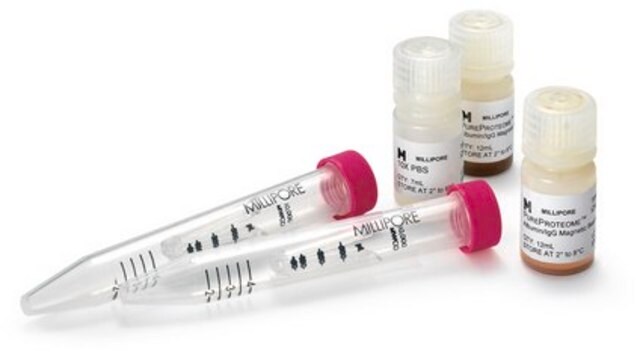444203
β-Mercaptoethanol, Molecular Biology Grade
A disulfide-reducing agent.
Synonim(y):
2-Mercaptoethanol, BME, β-Mercaptoethanol, 2-Hydroxyethylmercaptan, Thioethylene glycol
About This Item
Polecane produkty
klasa czystości
Molecular Biology
Poziom jakości
gęstość pary
2.69 (vs air)
ciśnienie pary
1 mmHg ( 20 °C)
Próba
≥99% (GC)
Postać
liquid
granice wybuchowości
18 %
przydatność reakcji
reagent type: reductant
producent / nazwa handlowa
Calbiochem®
warunki przechowywania
OK to freeze
stężenie
14.3 M (pure liquid)
współczynnik refrakcji
n20/D 1.500 (lit.)
pH
4.5-6 (20 °C, 500 g/L)
tw
157 °C (lit.)
mp
<-50 °C
gęstość
1.12 g/cm3 at 20 °C
1.114 g/mL at 25 °C (lit.)
ślady kationów
heavy metals (as Pb): ≤0.0001%
absorpcja
≤0.31 at 280 nm
≤1.50 at 260 nm
obecność zanieczyszczeń
DNases, proteases, RNases, none detected
Warunki transportu
ambient
temp. przechowywania
15-25°C
ciąg SMILES
OCCS
InChI
1S/C2H6OS/c3-1-2-4/h3-4H,1-2H2
Klucz InChI
DGVVWUTYPXICAM-UHFFFAOYSA-N
Szukasz podobnych produktów? Odwiedź Przewodnik dotyczący porównywania produktów
Opis ogólny
Zastosowanie
Ostrzeżenie
Inne uwagi
Informacje prawne
Hasło ostrzegawcze
Danger
Zwroty wskazujące rodzaj zagrożenia
Zwroty wskazujące środki ostrożności
Klasyfikacja zagrożeń
Acute Tox. 2 Dermal - Acute Tox. 3 Inhalation - Acute Tox. 3 Oral - Aquatic Acute 1 - Aquatic Chronic 2 - Eye Dam. 1 - Repr. 2 - Skin Irrit. 2 - Skin Sens. 1A - STOT RE 2 Oral
Organy docelowe
Liver,Heart
Kod klasy składowania
6.1A - Combustible acute toxic Cat. 1 and 2 / very toxic hazardous materials
Klasa zagrożenia wodnego (WGK)
WGK 3
Temperatura zapłonu (°F)
165.2 °F - closed cup
Temperatura zapłonu (°C)
74 °C - closed cup
Certyfikaty analizy (CoA)
Poszukaj Certyfikaty analizy (CoA), wpisując numer partii/serii produktów. Numery serii i partii można znaleźć na etykiecie produktu po słowach „seria” lub „partia”.
Masz już ten produkt?
Dokumenty związane z niedawno zakupionymi produktami zostały zamieszczone w Bibliotece dokumentów.
Klienci oglądali również te produkty
Nasz zespół naukowców ma doświadczenie we wszystkich obszarach badań, w tym w naukach przyrodniczych, materiałoznawstwie, syntezie chemicznej, chromatografii, analityce i wielu innych dziedzinach.
Skontaktuj się z zespołem ds. pomocy technicznej









